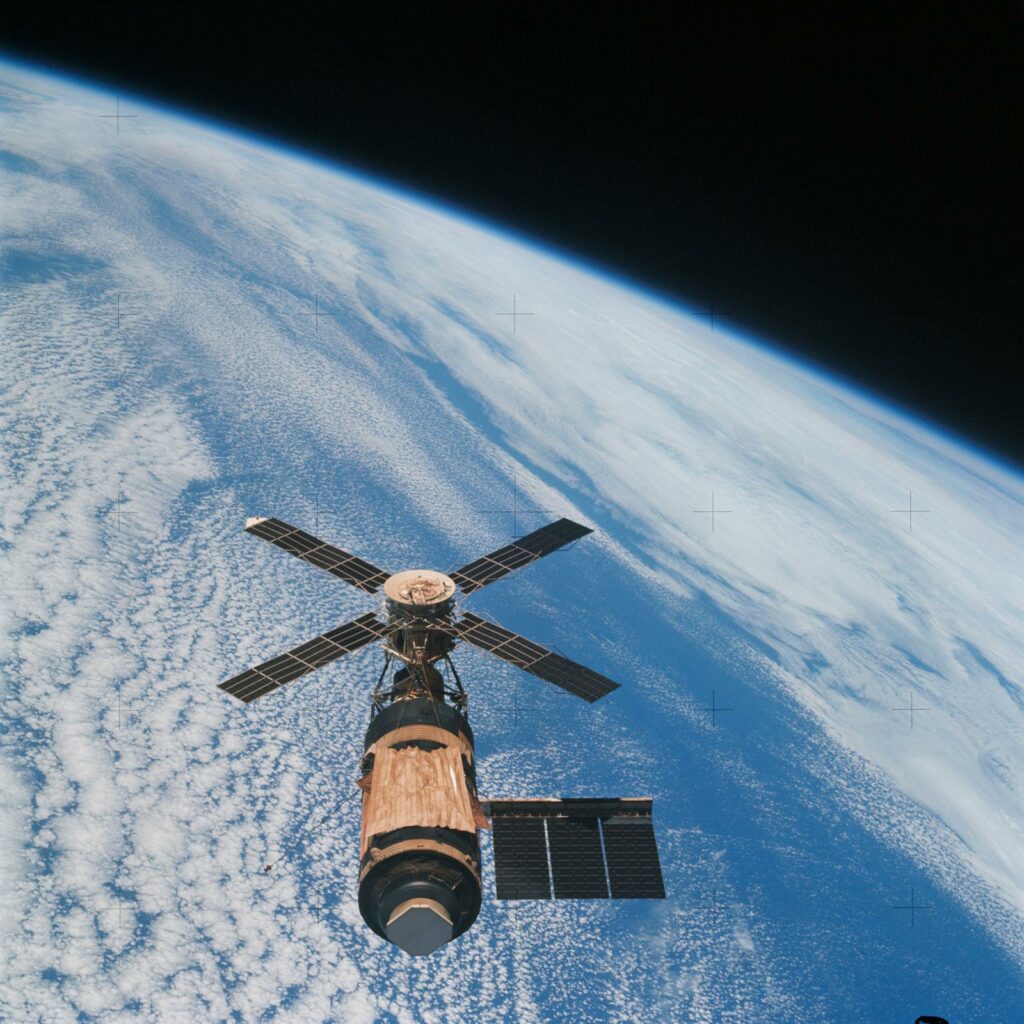
The story of Skylab
Fifty years on from its launch, Jane Green takes a look back at the troubles and triumphs of the USA’s trailblazing space station
Skylab 1 was America’s first long-duration orbiting laboratory. Crewed between May 1973 and February 1974, it was the ‘great uncle’ of Mir and the International Space Station, engineered from the shell of a redundant rocket stage (part of an earlier epic space programme). Transformed with additional modules and structures, Skylab became an unmitigated success. With humans now scheduled to return to the Moon in the near future, it’s time to celebrate this venerable one-of-a-kind space station.
Skylab was ultimately the result of Cold War political hostility between the Soviet Union and the United States. When Russia launched its first artificial satellite, Sputnik, in October 1957 – aboard an R-7 rocket designed by Russian Sergei Korolev – the United States was worried. The race between these two superpowers for the domination of space began in earnest. Their next target? The Moon.
Having already sent astronauts into orbit during Project Gemini, on 20 July 1969 the Moon race was won by the USA when Apollo 11’s Neil Armstrong and Buzz Aldrin took humankind’s first footsteps in the lunar dust. The next goal was to achieve a lasting presence in space: Skylab.

Rocket recycling
With the Apollo programme in the 1970s cut short, NASA began the Apollo Applications Program, its remit to adapt redundant hardware and systems developed for the lunar landing. Needing to keep his staff employed, famed Apollo rocket engineer and head of NASA’s Marshall Flight Center, Wernher von Braun, advocated launching an orbiting workshop using two-stage Saturn IB rockets. The hydrogen tank of the S-IVB stage would have ample room for what would be known as a ‘wet’ workshop. It could be launched loaded with liquid oxygen and liquid hydrogen, functioning as the rocket’s second stage in ascent. Once in orbit, any residual fuel and oxidiser could be vented and the oxygen tank pressurised to give astronauts a breathable atmosphere.
Preinstalled fittings could be made to the floors and walls – an aluminium grid structure with plentiful openings for fuel flow – enabling equipment to be mounted and experiments conducted. On top of the S-IVB stage could be a Multiple Docking Adaptor (MDA) with two docking ports – a prime axial one and back-up radial one – for the Apollo Command and Service Modules (CSM) ferrying crews and supplies. In the event of a spacecraft being disabled, a second two-person crewed Apollo CSM capsule could rescue resident crew, enabling all five astronauts to safely return to Earth.
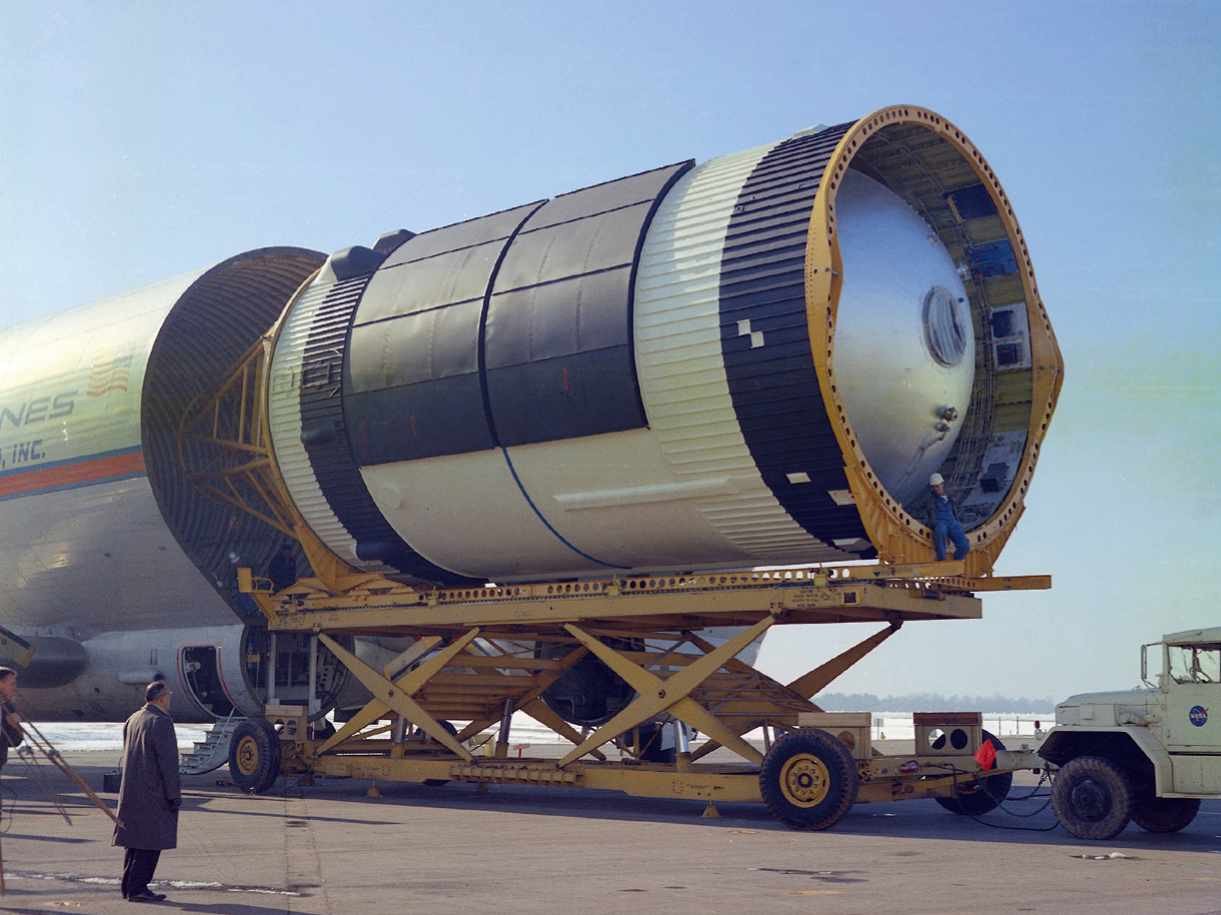
But concerns arose about the time required for astronauts, working in zero-G, to unload copious equipment from the MDA and install it in this ‘wet’ workshop. By 1969, and with unused Apollo 18, 19 and 20 Saturn V rockets waiting in the wings, the decision was made to switch Skylab’s launch from the smaller Saturn IB rocket to the much larger Saturn V. The greater capacity of the Saturn V meant that the S-IVB no longer needed to function as a rocket stage during launch. This ‘dry’ Orbital Workshop (OWS) could be outfitted on the ground, the hydrogen fuel tank serving as the main living quarters, with exercise equipment, a galley, zero-gravity shower system and the necessary instruments for scientific experiments. The liquid oxygen tank could be utilised as a waste facility.
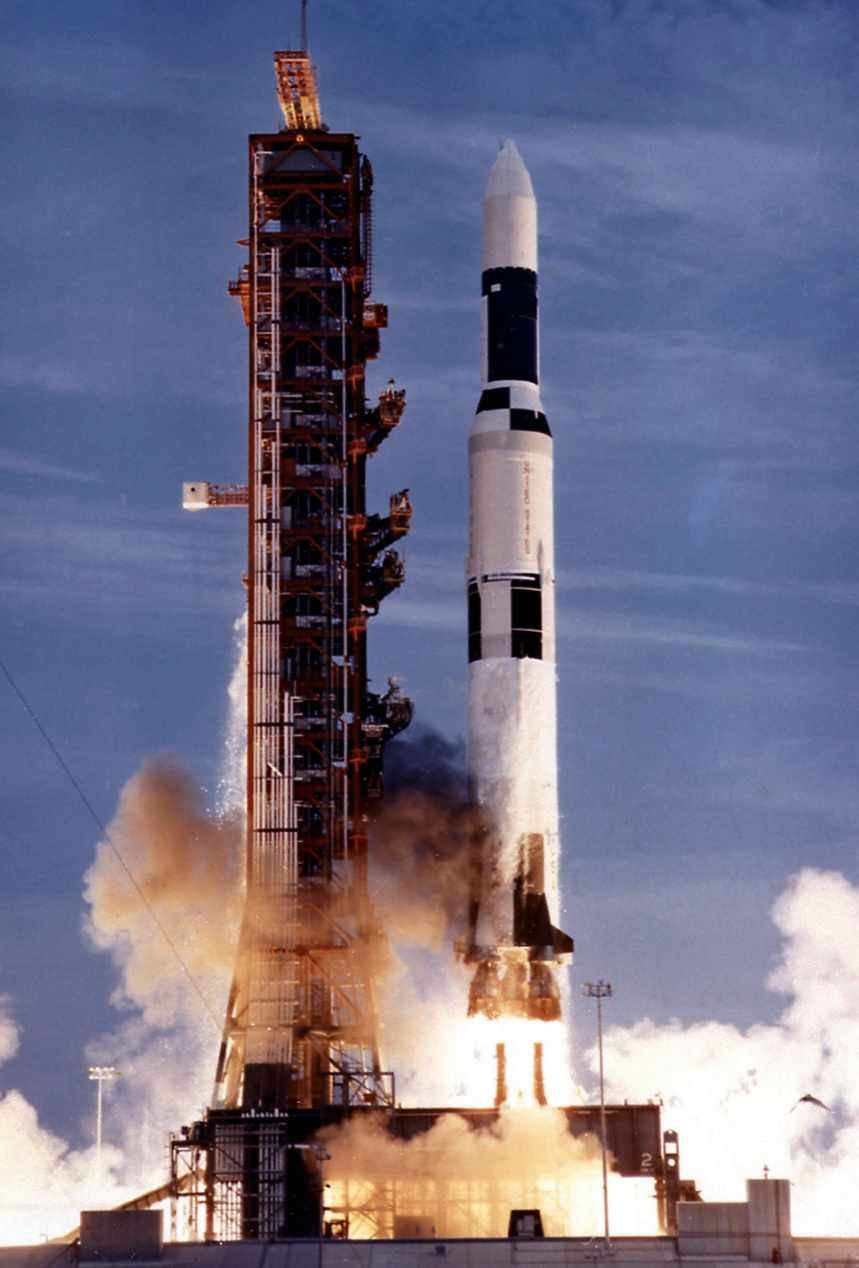
Off to a shaky start
On 8 August 1969, after years of development and workshops, the McDonnell Douglas Corporation was awarded the contract to create an orbital workshop out of two existing S-IVB stages. The unpiloted Skylab (SL-1) – weighing 77,088kg and the only space station built and operated solely by the USA – was launched on a two-stage Saturn V rocket (SA-513) on 14 May 1973 from Kennedy Space Center’s Pad 39A. Shortly after lift-off, a large micrometeoroid shield – installed to deflect debris and act as a thermal blanket – structurally failed.
Within seconds, aerodynamic forces ripped it from the station. One of the two main solar array wings, designed to deploy in space, also partially deployed. Several minutes later, after the rocket’s second stage burn, retro rockets fired, separating the booster from the station. Their exhaust hit the partially deployed solar array and tore it off. Later, in orbit, it was discovered that the other solar array had been tangled in debris and failed to deploy. With the micrometeoroid shield missing, the station was exposed to extreme levels of solar radiation – a withering 52°C (126°F).
Mercifully, four solar arrays on the Apollo Telescope Mount (ATM) deployed as planned, giving sufficient power for Marshall Space Flight Center controllers to stabilise the station until repairs could be made. On 25 May, after a delay for tools to be modified and techniques developed, and after subsequent crew training, Skylab 2 (SL-2) launched on a Saturn IB rocket (SA-206) carrying the first Skylab crew: commander Charles ‘Pete’ Conrad, pilot Paul Weitz and science pilot Joseph Kerwin. On their second day in orbit, in searing temperatures, they deployed a 6.7m x 7.3m ‘parasol’ – a solar shade – through an airlock in the side of the OWS. Made of woven nylon, mylar and aluminium it instantly reflected sunlight and made the inside temperature bearable.
Speeding through the science
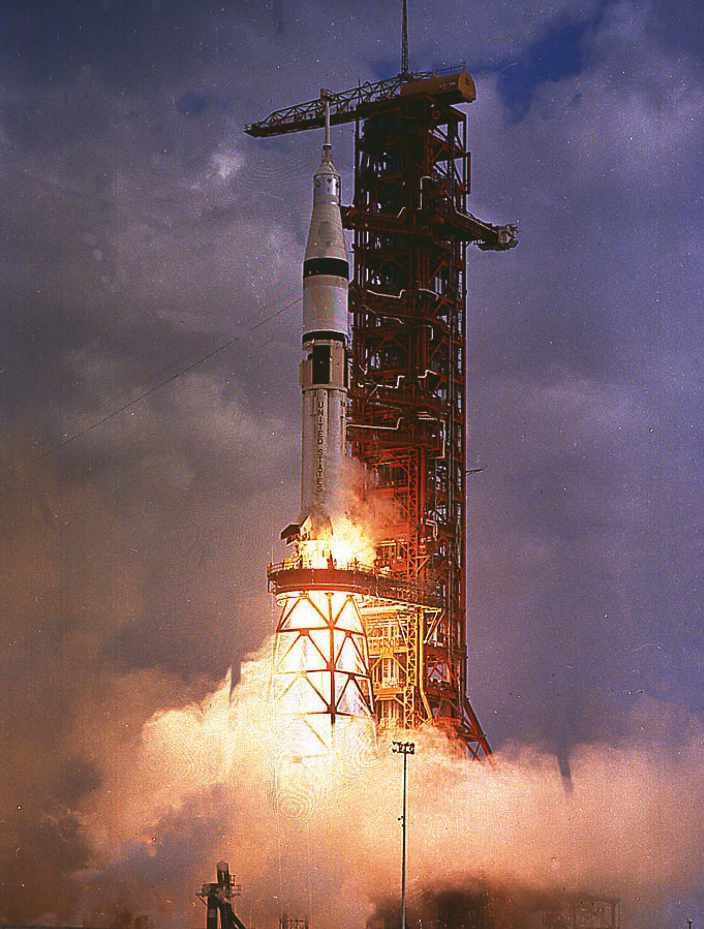
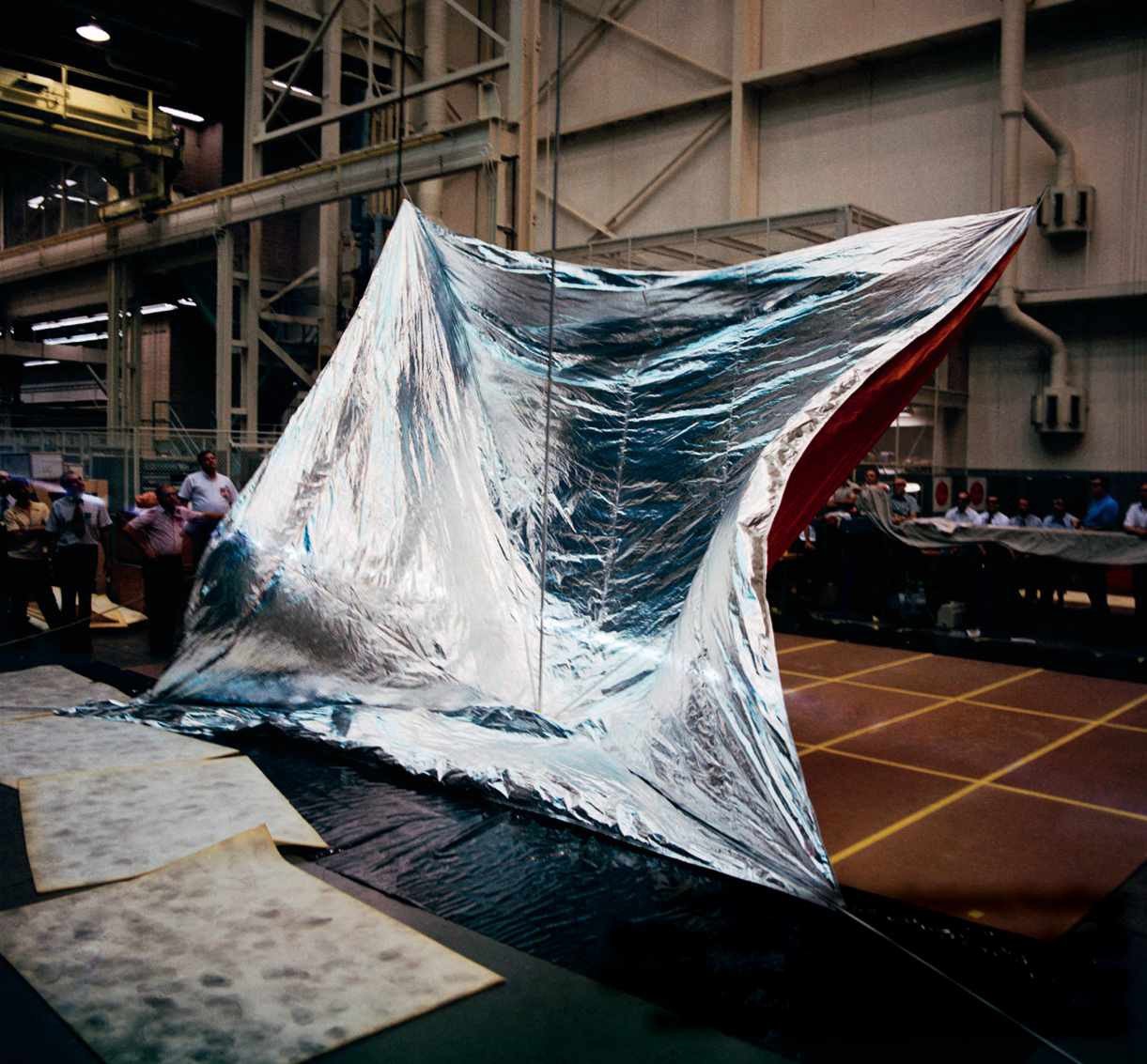
Along with the Orbital Workshop (OWS) and Multiple Docking Adaptor (MDA), there was the Airlock Module (AM), which could be sealed off and depressurised, enabling astronauts to exit via a large hatch to conduct spacewalks for changing camera film, performing experiments and doing routine maintenance. On 7 June, the crew used this facility to release the jammed solar array and deploy it fully, increasing the available power.
Also key was the octagonal Apollo Telescope Mount (ATM) to which three control moment gyroscopes (CMGs) were attached, stabilising the entire station. The ATM housed the four solar arrays and a battery of solar instruments. Inside, a cylinder, divided into four quadrants and gimballed to enable exquisite pointing control, provided mounting points for X-ray and hydrogen-alpha telescopes, a spectroheliograph, spectrographs, a spectroheliometer, cameras and a white-light coronagraph.
Working at a complex control console, astronauts viewed and studied our nearest star in X-ray, extreme ultraviolet, ultraviolet and hydrogen-alpha wavelengths – an operation, according to commander Charles Conrad, akin to “playing three 88-keyboard pianos at the same time”. Solar flares, filaments, coronal holes, coronal mass ejections and even a comet – Kohoutek – were observed and imaged with hitherto unrivalled clarity. These lengthy solar observations across the electromagnetic spectrum, above Earth’s atmosphere, vastly increased our knowledge of the Sun and the heavens.
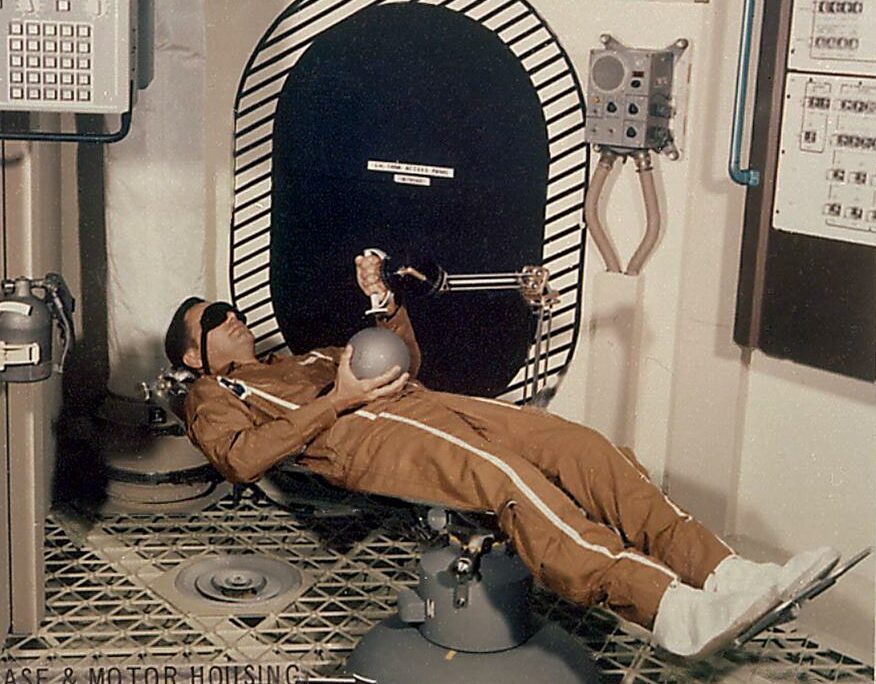
During its operational lifetime, Skylab orbited Earth more than 2,476 times. It was visited by a further two crews: Skylab 3 (SL-3) with commander Alan Bean, pilot Jack Lousma and science pilot Owen Garriott, and Skylab 4 (SL-4) with commander Gerald Carr, pilot William Pogue and science pilot Edward Gibson. All were transported to the station by Apollo spacecraft launched on Saturn IB rockets. The Skylab 2 crew stayed 28 days (the longest continuous in-space stint at the time), with SL-3 and SL-4 crews staying 59 and 84 days respectively.
The crews achieved all of NASA’s major goals. In addition to making stunning solar observations, they studied the physiological effects of prolonged periods of weightlessness. They observed Earth’s crops and weather, and monitored environmental changes. They also carried out experiments in manufacturing alloys and growing perfect crystals in microgravity.
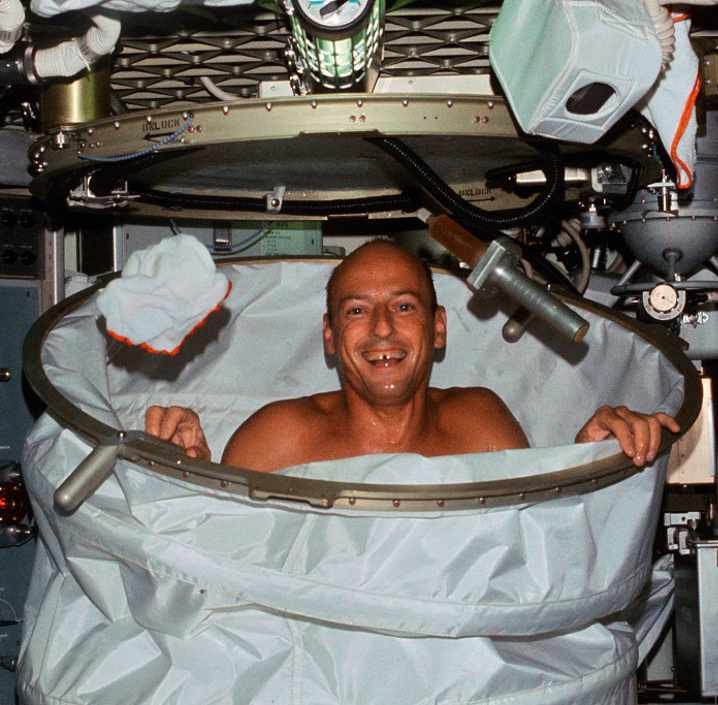
Skylab runs out of road
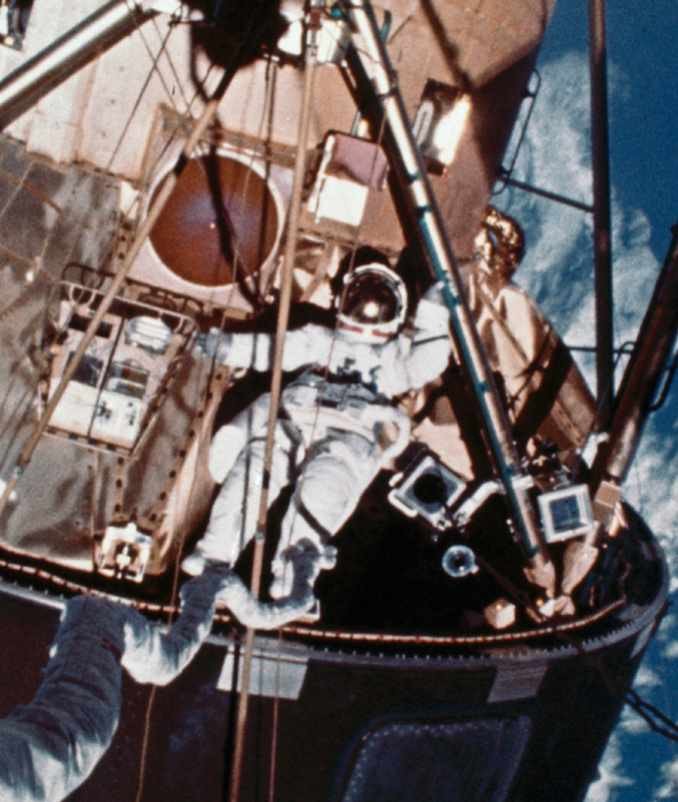
Skylab was expected to remain in orbit until at least November 1979 and at best March 1983, but unexpected increased solar activity – which heated Earth’s upper atmosphere and increased drag – decayed its orbit. A fourth 20-day Skylab 5 crewed mission was considered; the Skylab rescue mission standby launch vehicle could boost the station to a higher altitude and the crew could conduct experiments. NASA even placed a contract to use a Teleoperator Retrieval System (TRS), launched aboard NASA’s Space Shuttle, to robotically reboost Skylab’s orbit (see Skylab’s dramatic ending, above). Even destruction by missiles was considered. But in December 1978, with budget pressures and Space Shuttle missions stymied by delays, Skylab operations were shut down and it was parked in a 433km x 455km orbit. It fell to Earth on 11 July 1979.
Hailed by Rocco Petrone, director of launch operations at the Kennedy Space Center, as a “bold concept which opened new pathways in the sky”, Skylab was NASA’s most ambitious human spaceflight programme. Crucially, it proved that astronauts could live, work and overcome problems in an almost business-like manner in low-Earth orbit for extended periods of time. This achievement paved the way for permanent operations; NASA and ESA next focused on the reusable Spacelab module, an orbital workshop that could be deployed with the Space Shuttle. Along with the researched-but-never-built Space Station Freedom, this led to the construction of the International Space Station. But it all began with Skylab.
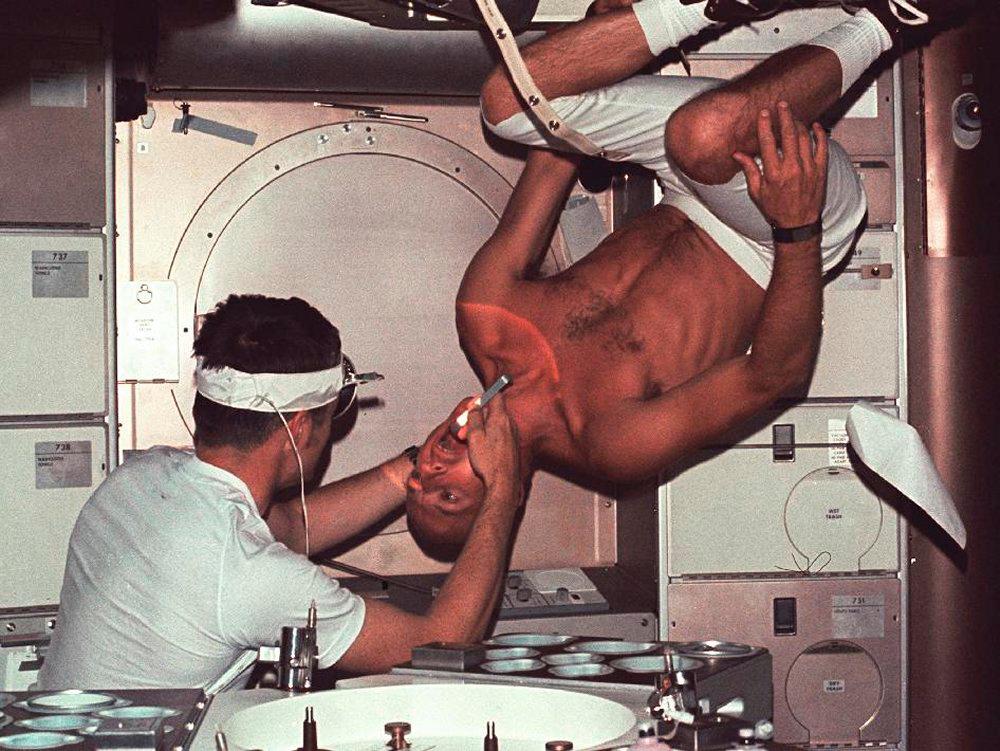
Inside Skylab
A masterpiece of recycling, the station repurposed launch and flight vehicles from the Apollo era
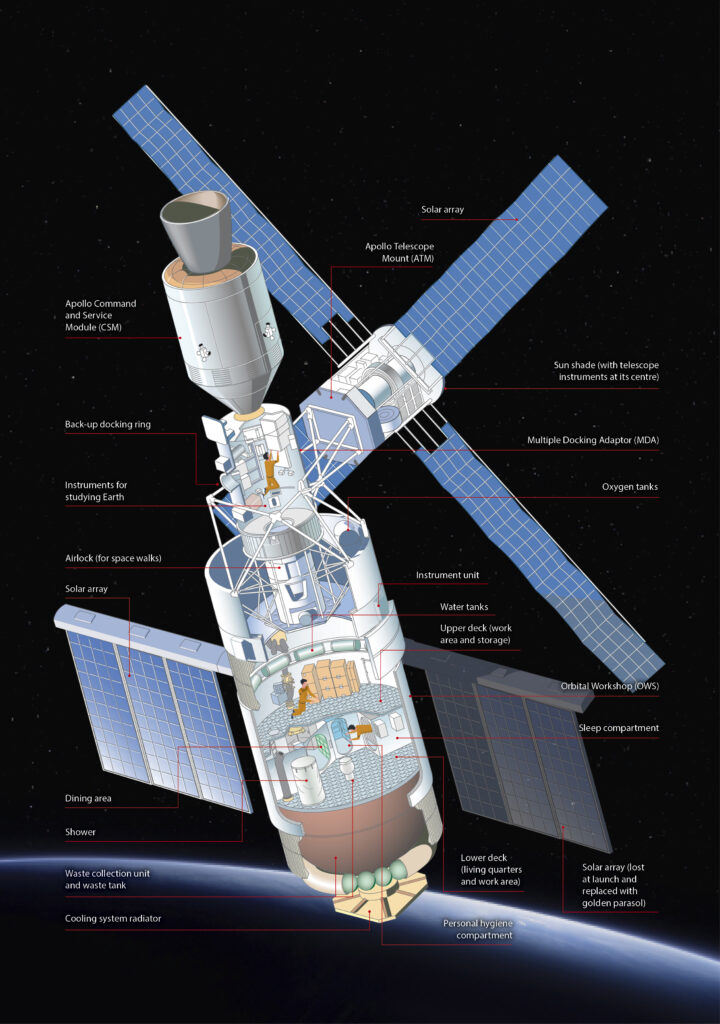
Skylab in numbers
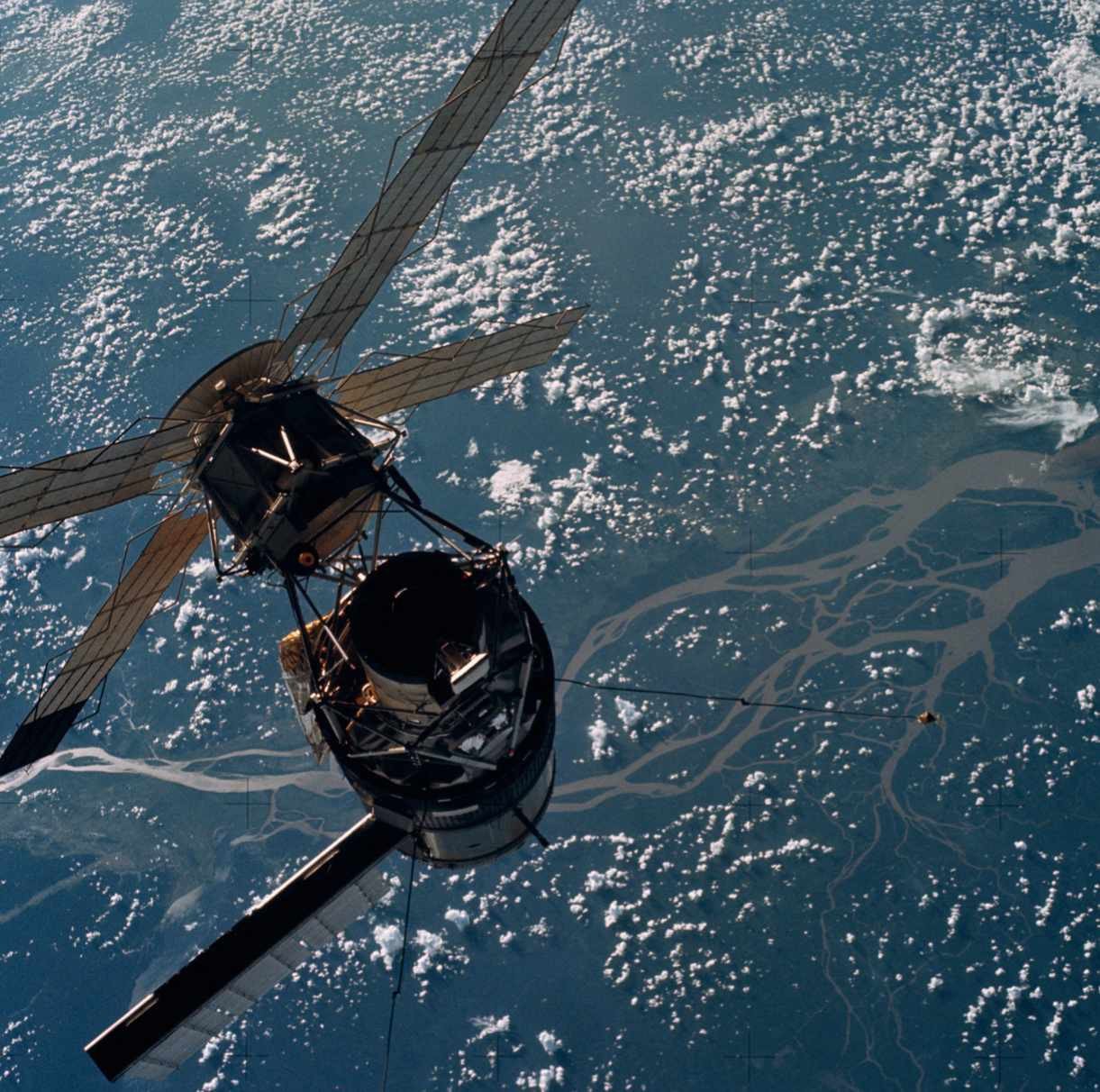
365 cubic metres of habitable working space
36.1 metres, the station’s overall length
90,606kg, total weight, including Command Service Module
27 metres, the width of the orbital workshop, including solar arrays
Skylab’s dramatic ending
How do you deorbit a 77,088kg laboratory? That’s the problem NASA faced in the summer of ’79
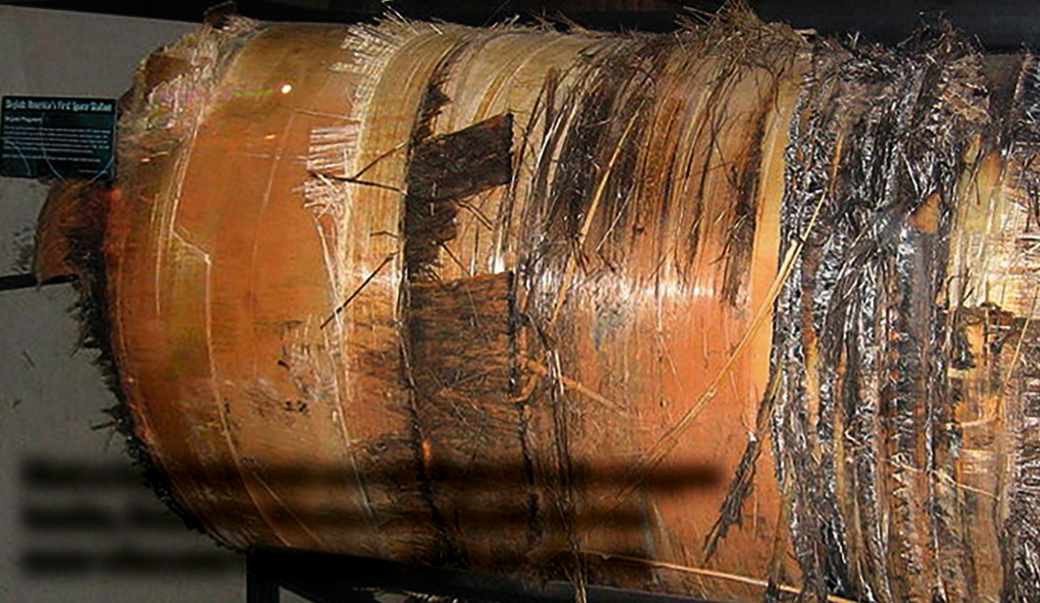
Skylab’s demise was a global media event. With NASA budget pressures leaving the redundant station lacking the control and navigation mechanisms to return it safely to Earth, the world celebrated but also feared its end.
On 6 March 1978, NASA ground controllers made contact with the empty station and on 24 April sent reactivation commands to reorient it, extending its lifetime and giving a predicted uncontrolled reentry of mid-1979. Having placed it in a high-drag solar-inertial attitude in January 1979, on 20 June it was manoeuvred into ‘torque equilibrium’, giving NASA the option of delaying or advancing its precise orbit for reentry.
At 07:45 UTC on 11 July, a tumble command was sent to Skylab from the Madrid tracking station in Spain, shifting the point of reentry away from Canada and the US eastern seaboard. Reentry occurred that day, during orbit 34,981, at approximately 16:37 UTC, the debris dispersion area stretching from the southeastern Indian Ocean and across a sparsely populated region of southwestern Australia.
Residents there spotted dozens of colourful flares as large chunks disintegrated 16km up in the atmosphere. Several US and Australian museums now house retrieved Skylab wreckage, including two chunks of oxygen tank, the smaller one dug up by an Australian rancher as recently as 1990.
